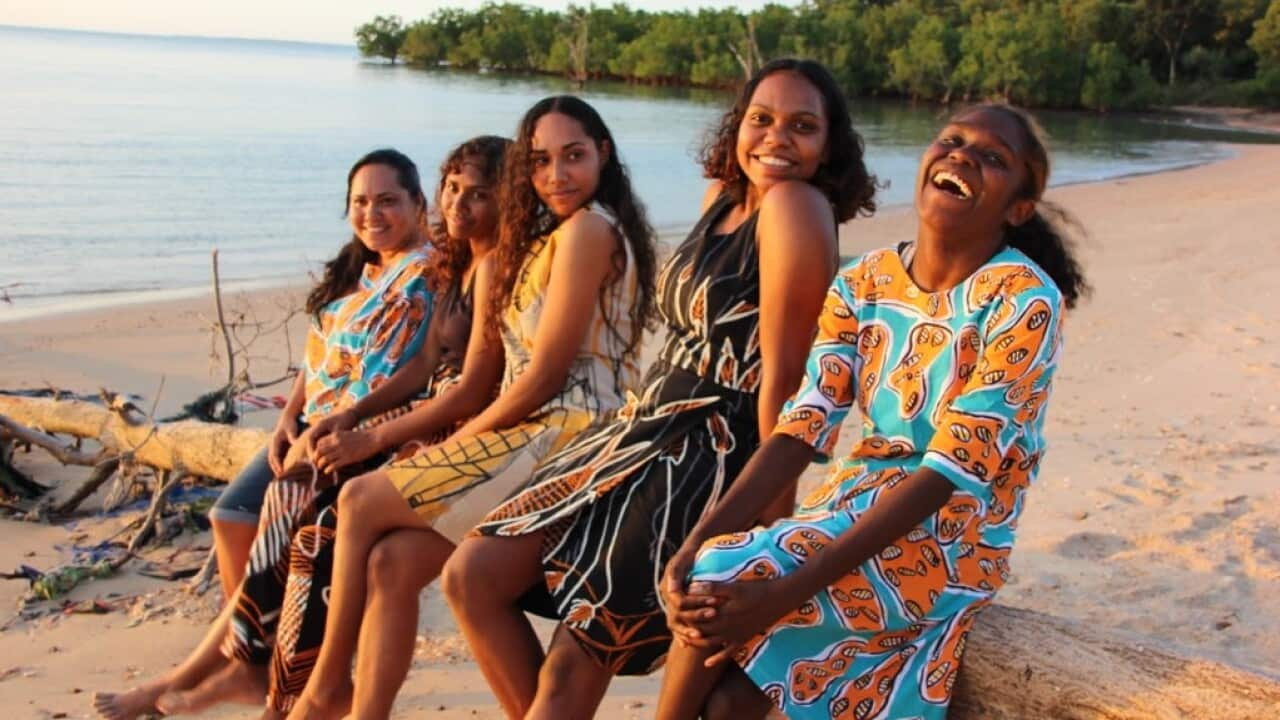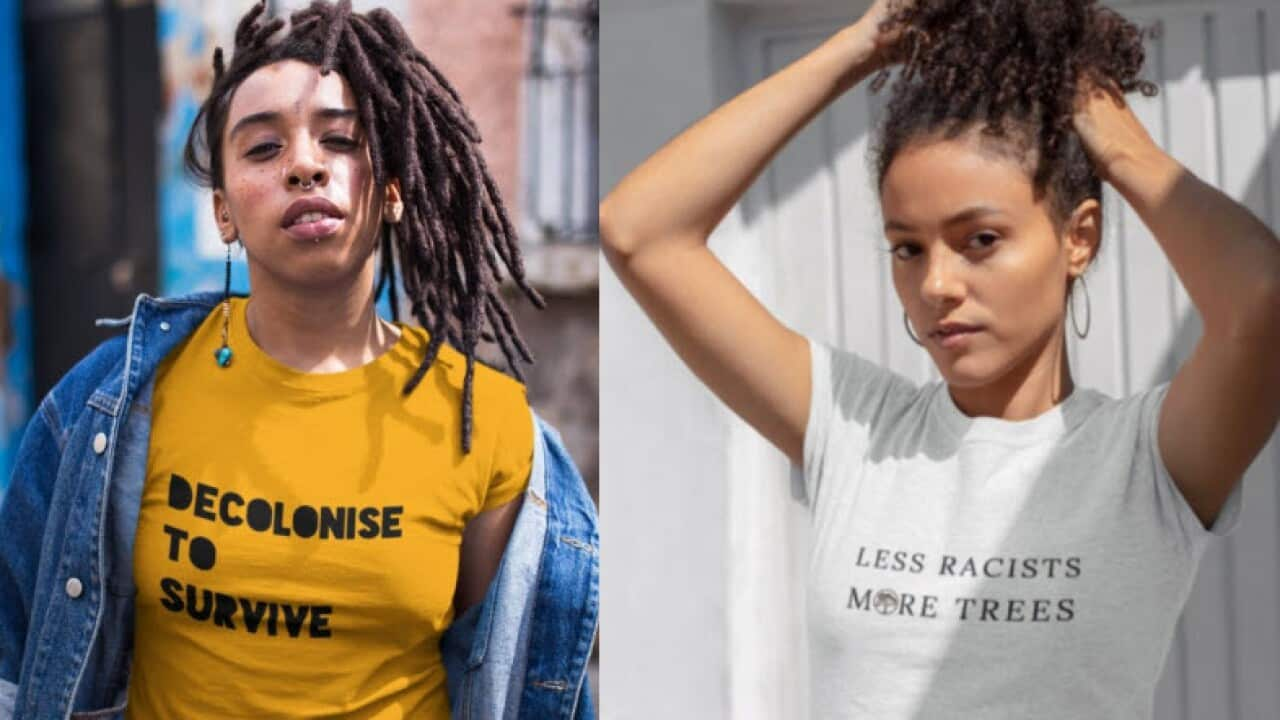The first edition of National Indigenous Fashion Awards (NIFA), held on 5 August, shone a spotlight on First Nations fashion and textile designers and their work, signalling hopes for a more diverse industry.
“Indigenous excellence in this space has been growing for many years," says Nina Fitzgerald, Creative Director of NIFA.
"Arguably it’s been there forever as Aboriginal and Torres Strait Islander people have made textiles and wearable art and fashion. So it’s become increasingly obvious that we need this space and award to celebrate and honour this incredible craftsmanship."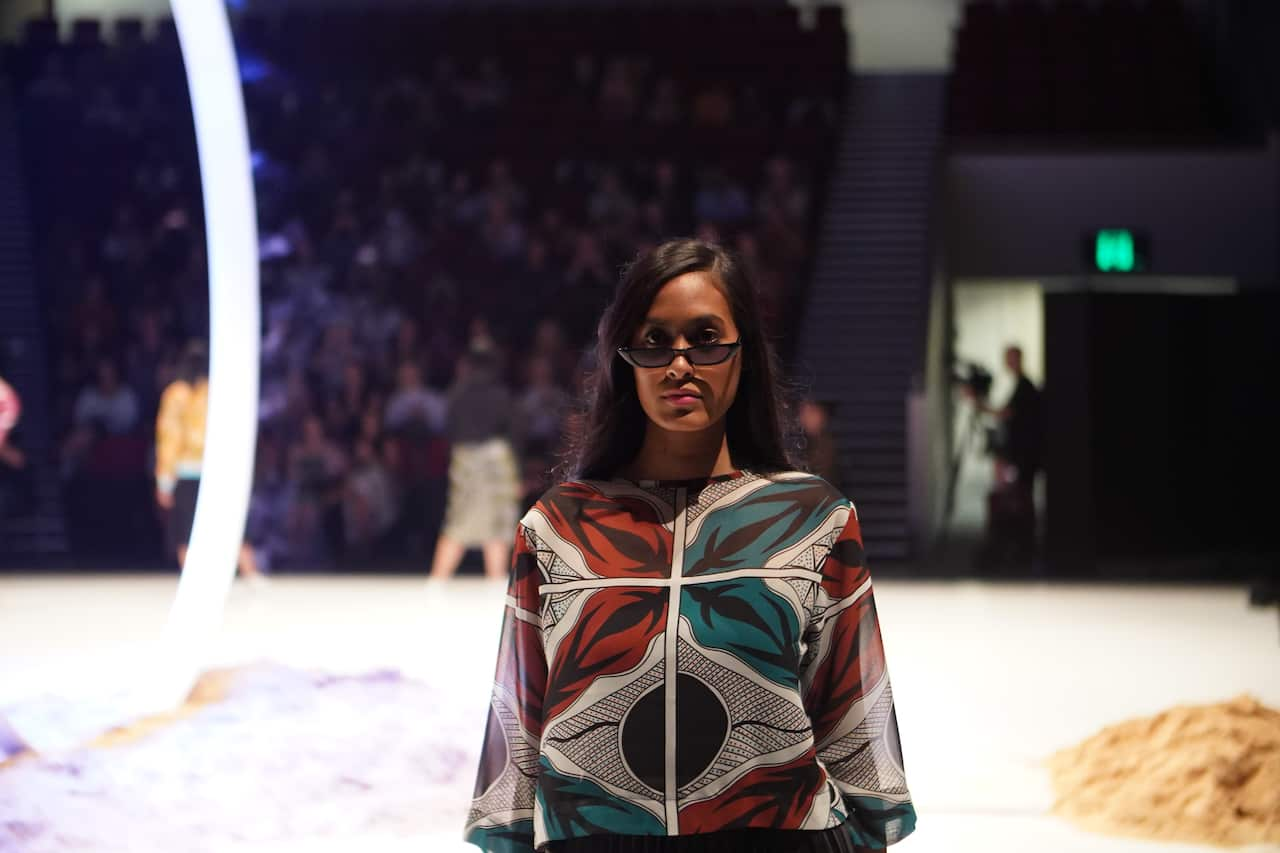 Artistic tradition and textile craftsmanship make indigenous fashion and design part of over 60,000 years of culture, with ancient stories being told through the fashion, setting it apart from the world of non-Indigenous fashion.
Artistic tradition and textile craftsmanship make indigenous fashion and design part of over 60,000 years of culture, with ancient stories being told through the fashion, setting it apart from the world of non-Indigenous fashion.

Bede Tungutalum fabric design. Photo by Dylan Bucklee Source: Source: NIFA
“A lot of indigenous fashion is created based on ancient stories and ancient culture and connection to the land and connection to the community, which I don’t think the Australian fashion industry does largely,” Ms Fitzgerald told NITV Radio.
'Indigenous fashion can educate the community'
Indigenous fashion is more than just wearable art as it can educate and inform non-indigenous Australians, according to Liandra Gaykamangu, a proud Yolngu woman from North East Arnhem Land in Northern Territory and the designer behind the swimwear fashion label Liandra Swim.
“I love to be able to share and educate and create positive conversations around Indigenous Australia. So I wanted to be able to use my swimwear line to do that,” she says.
“We do that through our prints that are visually a big ode and we share the story behind the prints with our customers.”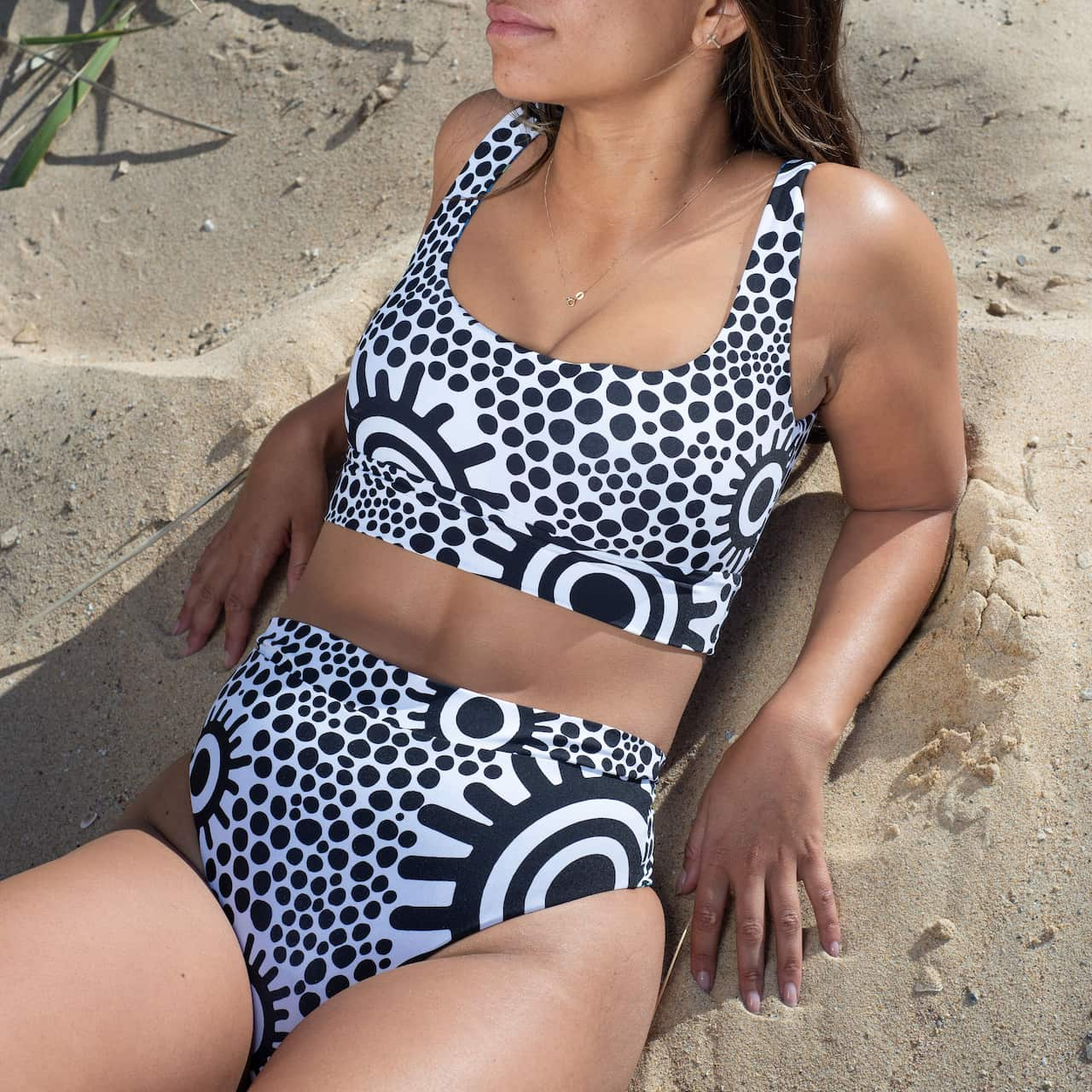 Ms Gaykamangu explains how she names her creations after Aboriginal women from the community, who she says are “really influential inspiring and powerful Indigenous women” who inspired her in life.
Ms Gaykamangu explains how she names her creations after Aboriginal women from the community, who she says are “really influential inspiring and powerful Indigenous women” who inspired her in life.

Liandra swim Photo by Tim Henry Source: Source: NIFA
“I just think it’s amazing we’ve got doctors and artists and sportswomen, we’ve got singers and entertainers; so there are no real criteria except for that they are doing something really cool in their community and across the world. We help share their stories and create those positive dialogues with our customers,” she says.
Telling Indigenous stories through fashion
This is not only a homage to these women but also an effort to educate the wider community through positive conversations around fashion about Indigenous Australians, she says.
For example, the Vinka bikini is named after Western Australian Doctor Vinka Barunga, while the Marcia one piece is named after Marcia Ella Duncan who was the first Aboriginal netball player to play for Australia.
NIFA’s creative director Nina Fitzgerald says the Indigenous fashion movement is giving the Australian fashion industry a connection to the true and original stories of this country and provides a level of depth that she believes fashion rarely displays.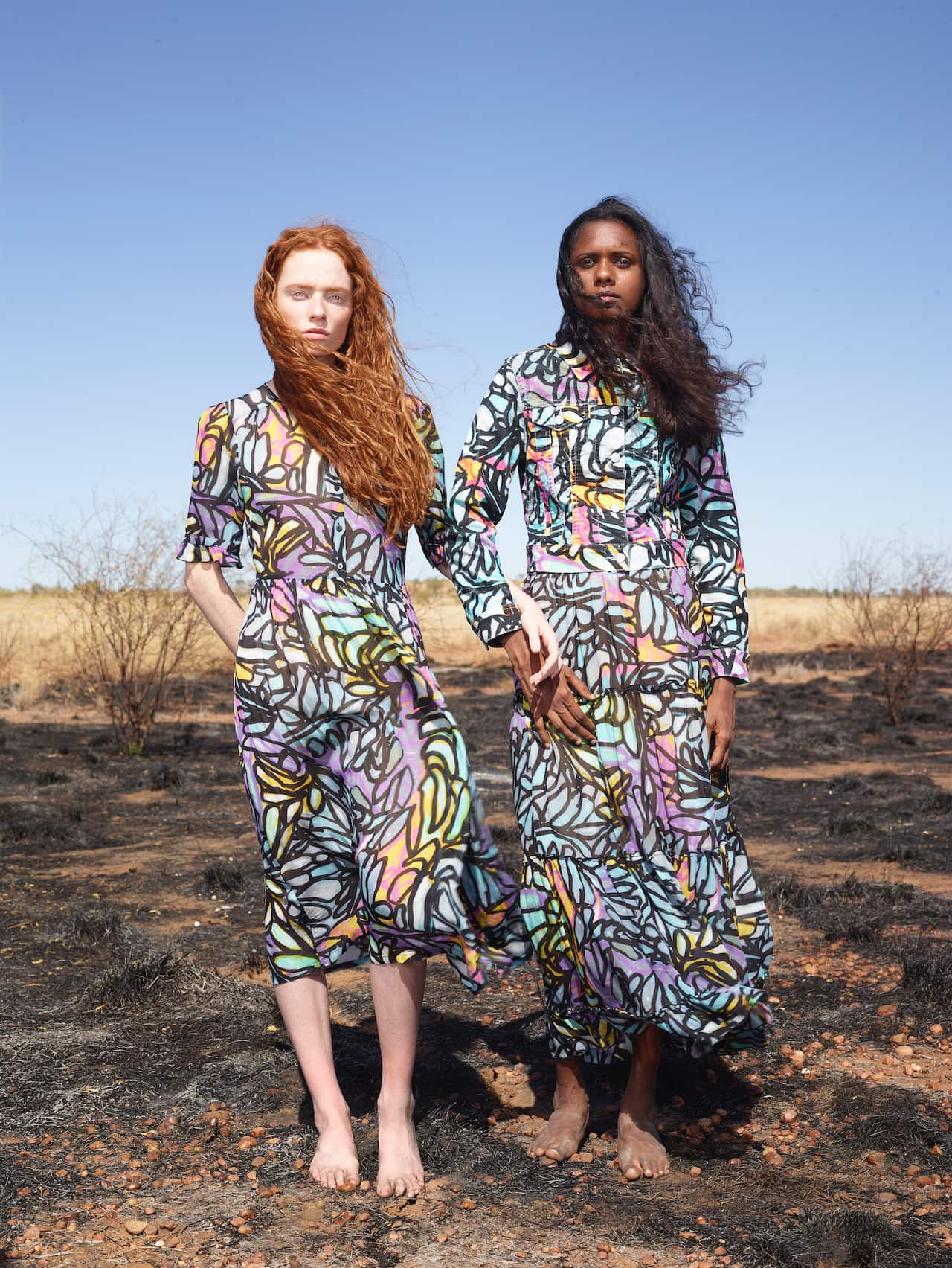 The diversity that Indigenous fashion brings to the mainstream fashion industry is something Ms Fitzgerald hopes will increase moving into the future.
The diversity that Indigenous fashion brings to the mainstream fashion industry is something Ms Fitzgerald hopes will increase moving into the future.

Mangkaja Gorman featuring artwork by Sonia Kurarra. Photo by Charles Freger Source: Source: NIFA
“NIFAs is one way that’s going to bring change because of capacity building, but I also think it’s about people coming on board and being supportive, helping to promote and provide platforms for these incredible artists and creatives in the fashion space so that things like big magazines telling our story, which we are starting to see more of, which is super exciting.”
Connection with the land through sustainable fashion
Another element emerging within the indigenous fashion space is the connection with the land being expressed through other means as many industry professionals are turning to sustainable fashion.
Liandra Gaykamangu is proud of her own brand producing prints on fabric made from regenerated plastic.
“We do our signature prints inspired by our Aboriginal culture so at the moment we’ve got four different prints, a green one, a brown one which are from my first collection and then my second collection is a black and white print and a blue print which is a reversible option which is pretty cool and those designs are also made on fabric that’s is made from regenerated plastic, so we are evolving into a more sustainable brand and looking at more different ways we can do a more eco-friendly and planet-friendly line of swimwear,” she said.
Bundjalung woman, Ella Noah Bancroft is an Australian born artist, storyteller, teacher, director and mentor. She founded her fashion business based on the slow fashion model, as a counter to fast fashion that, she says, has devastating effects on the environment.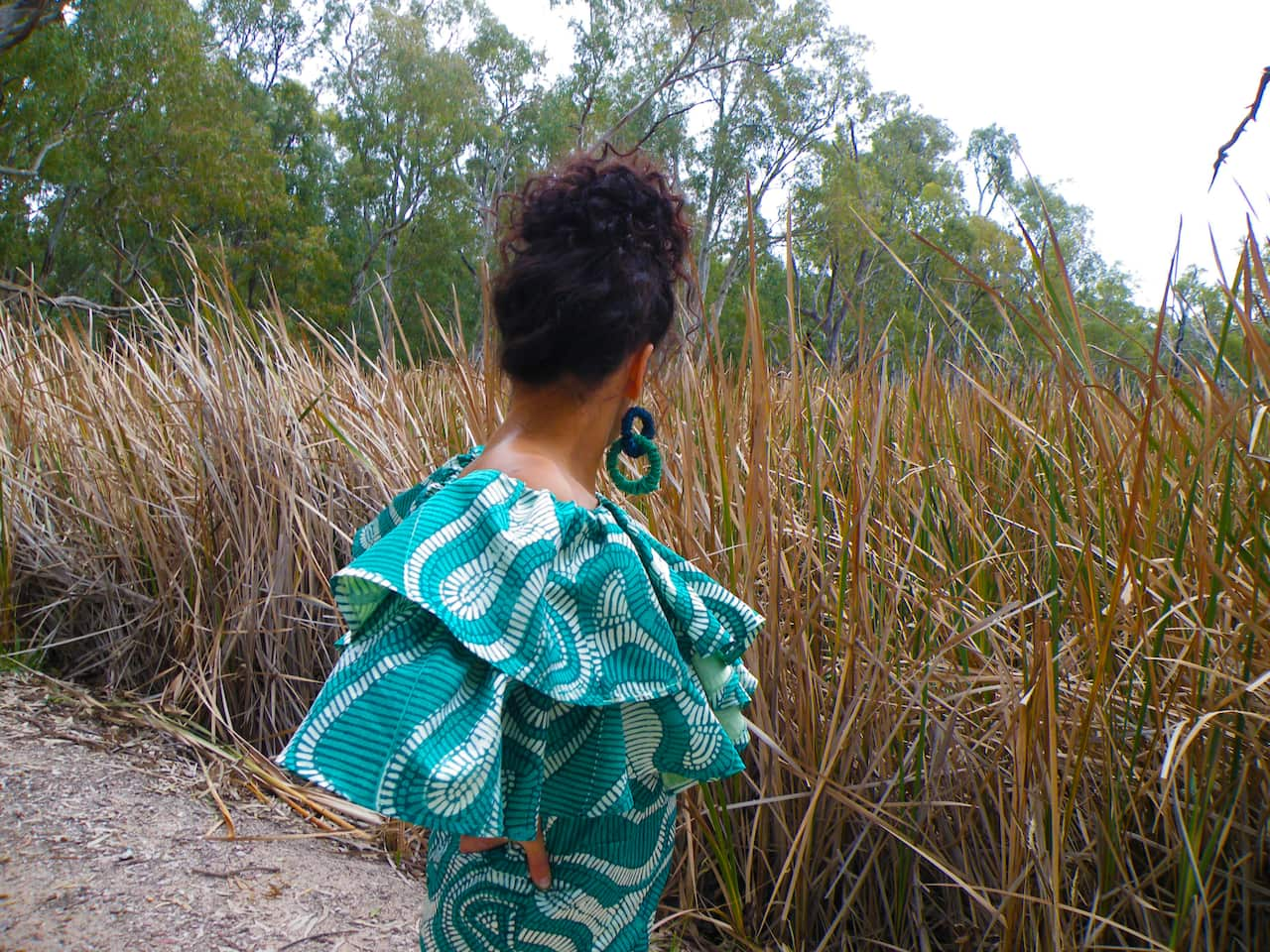 Her business, YHI Creations, upcycles waste clothing for selling online. “The whole idea is that no new clothes are made during the production of recreations,” she told NITV Radio.
Her business, YHI Creations, upcycles waste clothing for selling online. “The whole idea is that no new clothes are made during the production of recreations,” she told NITV Radio.

Lillardya Allirra Briggs Houston dress and earrings. Photo by Julie Briggs Source: Source: NIFA
“Basically, what I wanted to do is take t-shirts or clothing that was going to go to landfill and repurpose it; recreate tee-shits with strong activist messages on them.”
Fashion and activism
Ms Bancroft's work is primarily around the ideas of environmental protection, Indigenous rights and diversity and localising the economy.
Nina Fitzgerald believes it is a great opportunity for the mainstream industry to showcase more Indigenous works, where it can be something new which can lead to reconciliation. But, she says, it would require a long-term commitment on behalf of the sector.
“If there is anything that’s quite different about Indigenous fashion it is that it’s a much slower process and it’s more connected to culture and the land and it’s not just done and finished and high turnover and mass-produced.
“So it is important that there is a long term commitment to really deal with the diversity and reconciliation within the fashion space and then within Australia more broadly.”
Share
